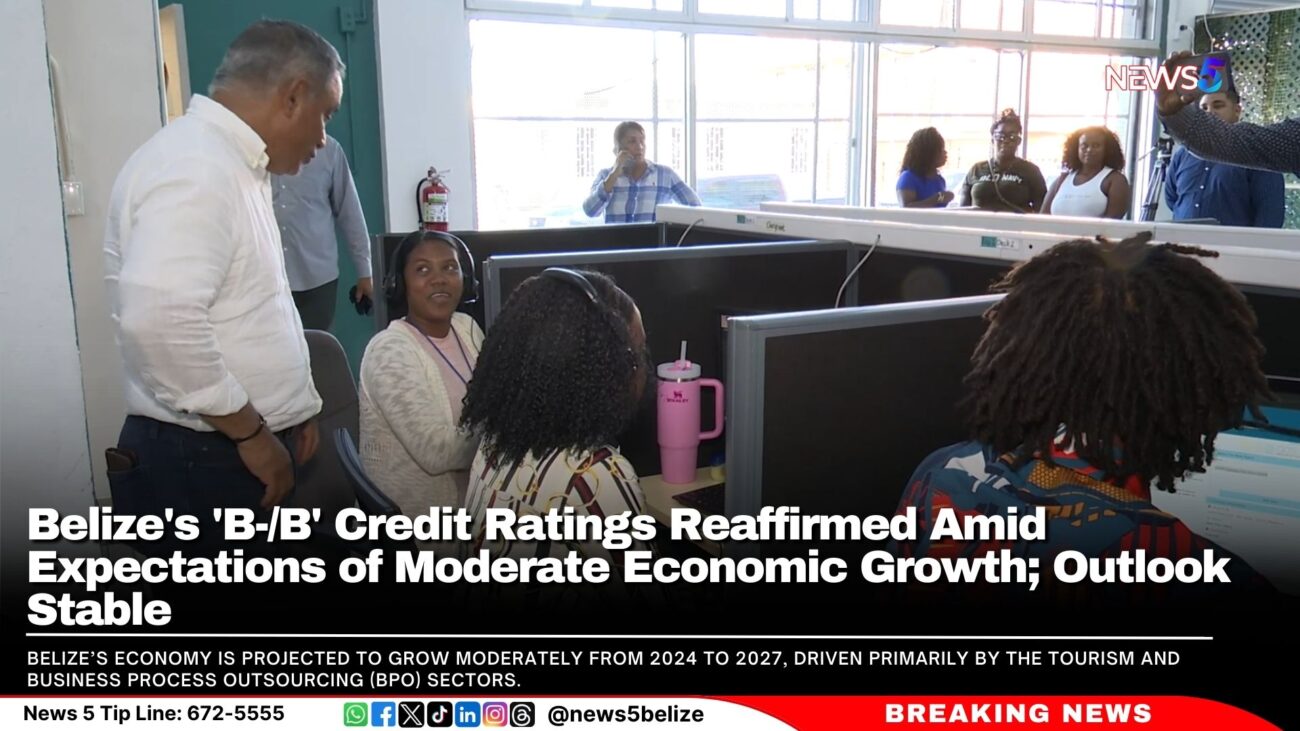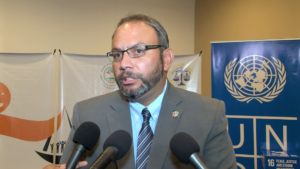Belize’s ‘B-/B’ Credit Ratings Reaffirmed Amid Expectations of Moderate Economic Growth; Outlook Stabl
Overview
Belize’s economy is projected to grow moderately from 2024 to 2027, driven primarily by the tourism and business process outsourcing (BPO) sectors. However, the country remains vulnerable to external shocks, with a fragile external profile.
S&P Global Ratings has reaffirmed its ‘B-/B’ sovereign credit ratings for Belize, maintaining a stable outlook. This reflects expectations for continued economic growth, weak external liquidity, and risks associated with the country’s high debt levels.
Rating Action
S&P Global Ratings has reaffirmed Belize’s ‘B-/B’ long- and short-term foreign and local currency sovereign credit ratings, with a stable outlook. The transfer and convertibility (T&C) assessment remains ‘B-‘.
Outlook
The stable outlook is based on Belize’s manageable debt service schedule over the next 12-18 months, underpinned by favorable debt conditions. Expectations of ongoing economic growth, coupled with government fiscal efforts, are likely to result in relatively low fiscal deficits and a stable debt trajectory.
Downside Scenario
The ratings could be downgraded in the next 12-18 months if Belize’s fiscal performance deteriorates, leading to rapid debt accumulation and further depletion of already low usable reserves.
Upside Scenario
Conversely, the ratings could be upgraded within the next 12-18 months if Belize achieves faster economic growth, supported by sound policy implementation, which would improve the country’s vulnerable fiscal and external profiles.
 Rationale
Rationale
Belize has shown a stronger-than-expected recovery from the pandemic-induced recession, but the economy is now slowing. GDP growth is expected to average 2.6% from 2024 to 2027, driven by tourism and the BPO sector. While this growth and fiscal measures should stabilize the country’s debt trajectory, Belize’s weak payment culture and history of defaults limit its access to external funding.
Belize’s economic, fiscal, and external profiles remain susceptible to natural disasters and global economic downturns. Despite a stable exchange rate peg to the U.S. dollar, the country’s monetary flexibility is constrained by low usable reserves and reliance on the monetary authority to finance government deficits.
Institutional and Economic Profile
Belize’s economy is expected to grow at an average rate of 2.6% from 2024 to 2027, led by the tourism and BPO sectors. However, growth is constrained by structural weaknesses, including high vulnerability to natural disasters, high costs of labor and energy, and deficiencies in infrastructure.
Despite improvements in data quality and transparency, Belize’s institutions remain weak, with successive governments failing to establish a sustainable public finance framework. Over the past two decades, Belize has experienced five sovereign debt defaults, limiting access to external commercial funding.
Flexibility and Performance Profile
Belize’s fiscal consolidation efforts aim to reduce the debt-to-GDP ratio and strengthen the external position. The government’s fiscal measures over the past two years have focused on controlling current expenditures. We expect fiscal deficits to remain moderately low, around 2.3% of GDP from 2024 to 2027, while the debt burden is expected to stabilize at 67.5% of GDP by 2027.
However, Belize’s external vulnerabilities remain significant due to low usable reserves and limited access to financing sources. The fixed exchange rate provides macroeconomic stability but limits monetary flexibility. While recent momentum in the tourism and BPO sectors is expected to help reduce the current account deficit, Belize’s external financing needs remain high, and usable reserves are critically low.
The Central Bank of Belize’s commitment to maintaining the currency peg is crucial for price stability, with inflation projected to average 2.3% from 2024 to 2027. Despite this, the country’s monetary policy space remains highly constrained.







Facebook Comments